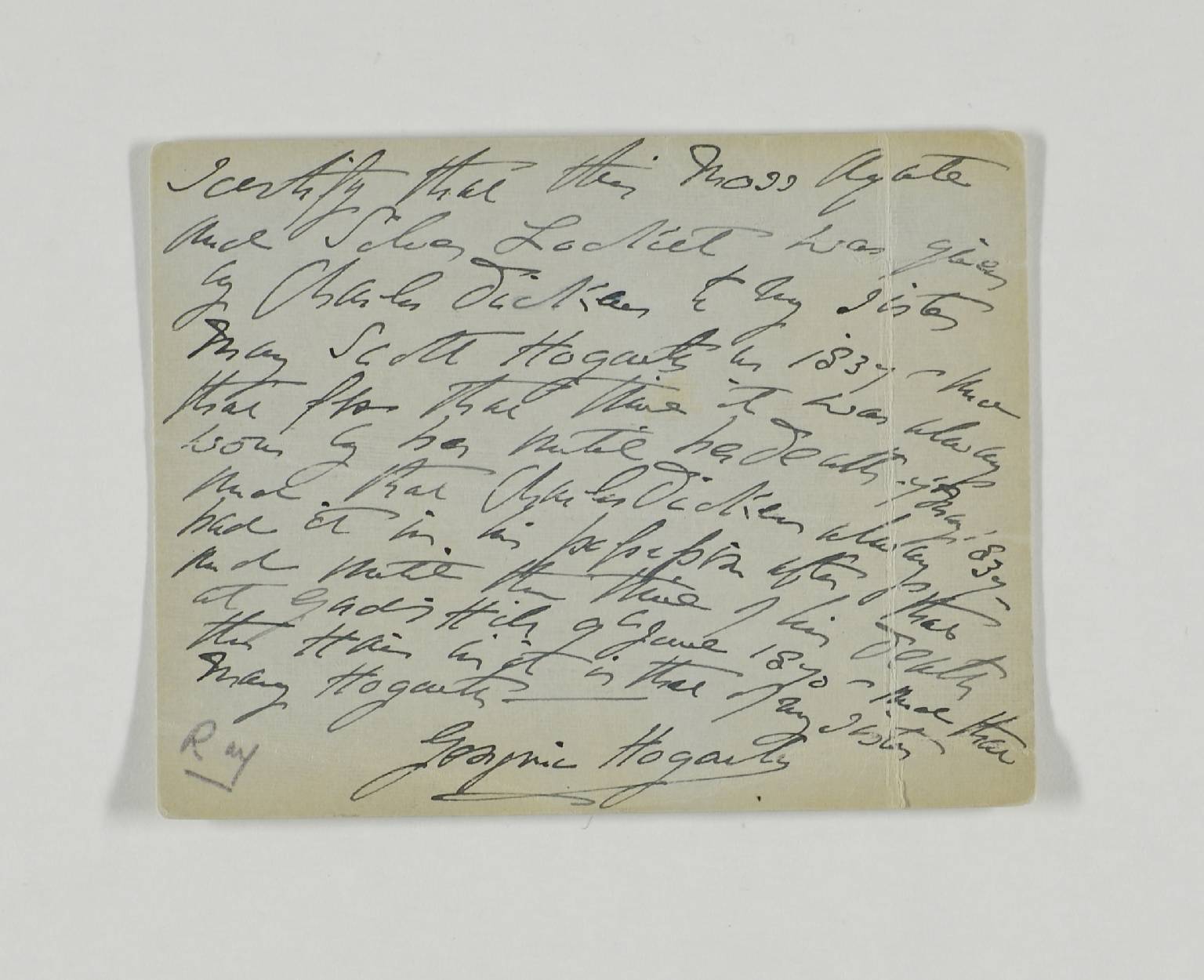Letter pertaining to silver and moss agate locket containing a lock of Mary Hogarth’s hair, given to Charles Dickens in 1837. Courtesy of Charles Dickens Museum
Locket owned by Mary Scott Hogarth containing a lock of Charles Dickens's hair. Courtesy of Charles Dickens Museum
Silver-plated inkstand belonging to Charles Dickens. Courtesy of Charles Dickens Museum
Collection of artworks, objects, playbills, letters associated with Charles Dickens, his life and work
Samuel Laurence
- Art Funded
- 2019
- Vendor
- private collection
Some 303 items make up this remarkable collection of artworks, playbills, letters and objects relating to the celebrated 19th-century writer Charles Dickens.
Among them is an important chalk and pastel portrait of Dickens by Samuel Laurence (c. 1837), as well as 144 letters by the author, of which 25 are previously unpublished.
These items come from the Nason collection, which was gathered by a man who read Oliver Twist as a boy, and who later spent 40 years developing holdings of considerable scale and quality.
The pastel portrait by Laurence appears to be a companion piece to the artist’s portrait of the writer in the collection of the Charles Dickens Museum, and to that in the National Portrait Gallery. It may be the original drawing for these portraits, a picture originally thought lost.
Among the correspondence here are rare, unpublished letters from Dickens’ father, John Dickens, as well as letters from Dickens detailing sad and turbulent times in his marriage to Catherine Hogarth. On 1 January 1848 he refers to a miscarriage suffered by his wife, while on 8 April 1860 he writes of their separation: ‘When I was young I made a miserable mistake, that is all.’
The acquisition includes a number of personal items. Among them are an ivory penholder given to Dickens by his wife for Christmas in 1838, and two lockets relating to Mary Hogarth, Dickens’ sister-in-law, who died in 1837, at the age of 17.
Included in the 33 artworks here are a number of items by George Cruikshank, the illustrator of Dickens’ early works. Perhaps most notable is the artist’s original drawing for ‘Fagin in the Condemned Cell’, the final illustration for Oliver Twist (1838). These are the first works by Cruikshank to enter the museum’s collection.
Other drawings for Dickens’ stories include work by ‘Phiz’, who illustrated the author’s novels from the 1830s to 1860, and by Frank Reynolds, whose illustrations date from the 1910s.
The Charles Dickens Museum is located at 48 Doughty Street, London, the home of Dickens and his family in the late 1830s. The museum’s collection includes furniture, paintings, and clothing, together with an extensive archive and research library used by scholars from all over the world.
Artists include
Provenance
Collection assembled over time by a private collector.


